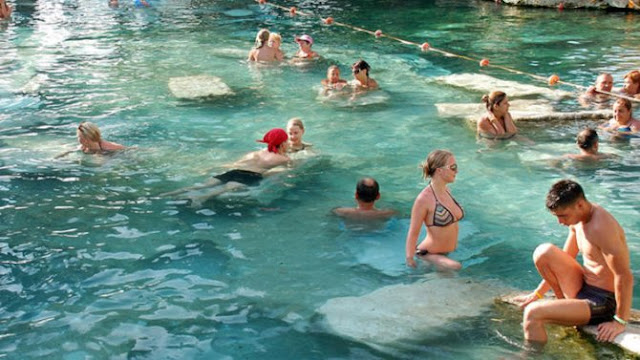
Turkey's natural aquifers draw in Russian guests
Natural aquifers in northwestern Turkey are drawing in Russian vacationers searching for an approach to mend different medical issues.
Within the Pamukkale Hierapolis complex is Cleopatra’s Pool (hot springs sometimes called the Pamukkale Antique Pool). The hot springs, with its mineral rich waters are said to be good for illnesses such as skin diseases, circulation problems, rheumatism, heart diseases and many other ailments and people flocked here to find relief for their diseases.
Holidaymakers, particularly the individuals who experience the ill effects of rheumatic torment, skin and metabolic infections, favor Yalova region to appreciate the underground aquifers.
"Russian visitors show incredible enthusiasm for our offices. We watched 20 percent - 25 percent expansion [in 2019] in the quantity of Russian guests when contrasted with the earlier year, Ümit Gürbüzoğlu, agent chief of Thermal Hot Springs Enterprise of Turkey's Health Ministry, revealed to Anadolu Agency.
Featuring 3,500 Russian guests were suited in 2019, Gürbüzoğlu said 2,500 guests originate from Middle Eastern nations.
"Underground aquifer the travel industry is well known, particularly throughout the winter," he stated, including that swimming in the outside pool while snowing is a delight.
Expecting to expand the quantity of guests in 2020, he said Russian travel guides who making the most of their excursion in Yalova, have exhorted others to visit.
Russian vacationer Valeriya Dobrotina said she found out about the office through internet based life.
"My companions, who previously visited there, prompted me to visit. I truly preferred the spot. I need to visit there once again," she included.
Kristina Basinskaya, another Russian, said she profits by the warm water.



















